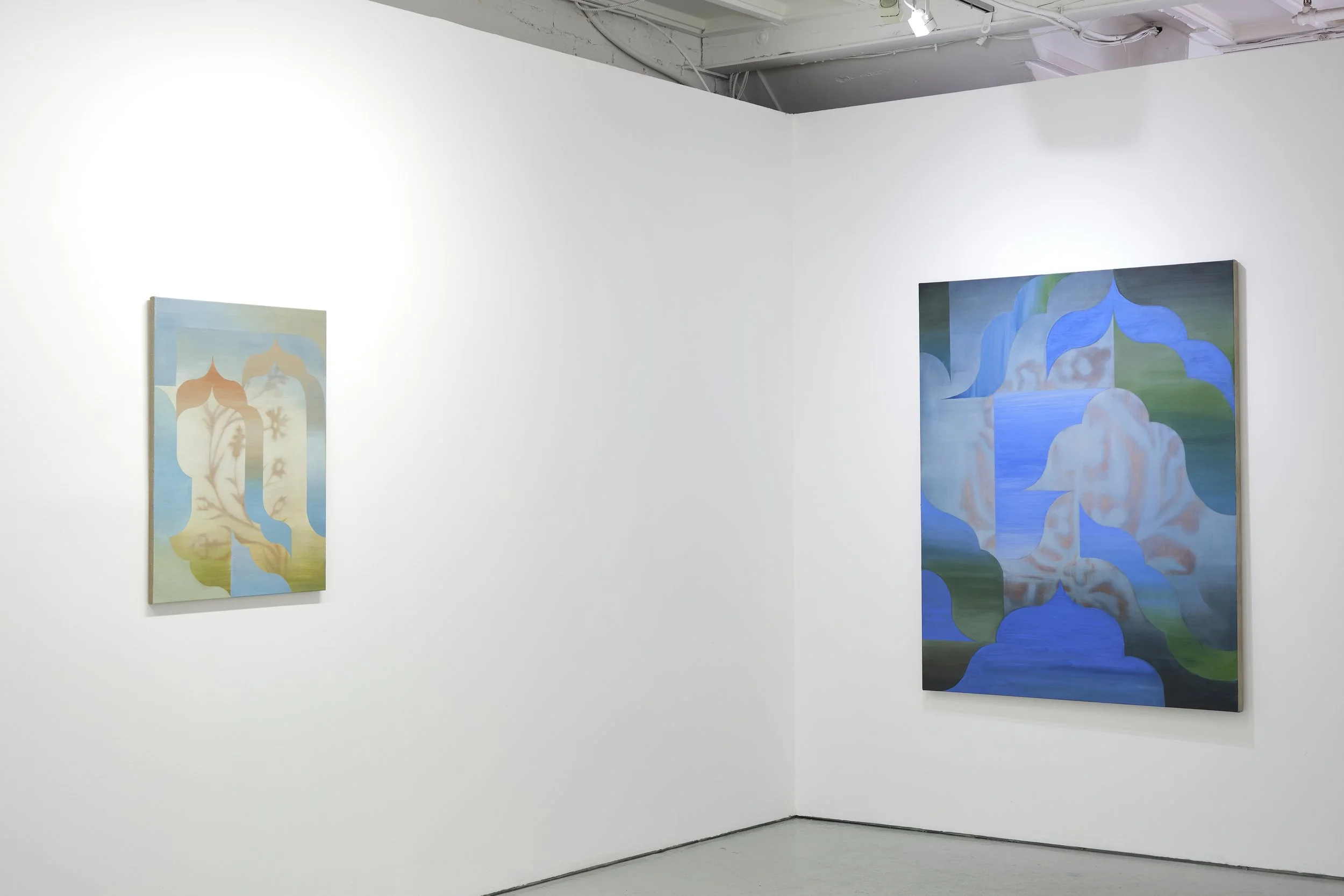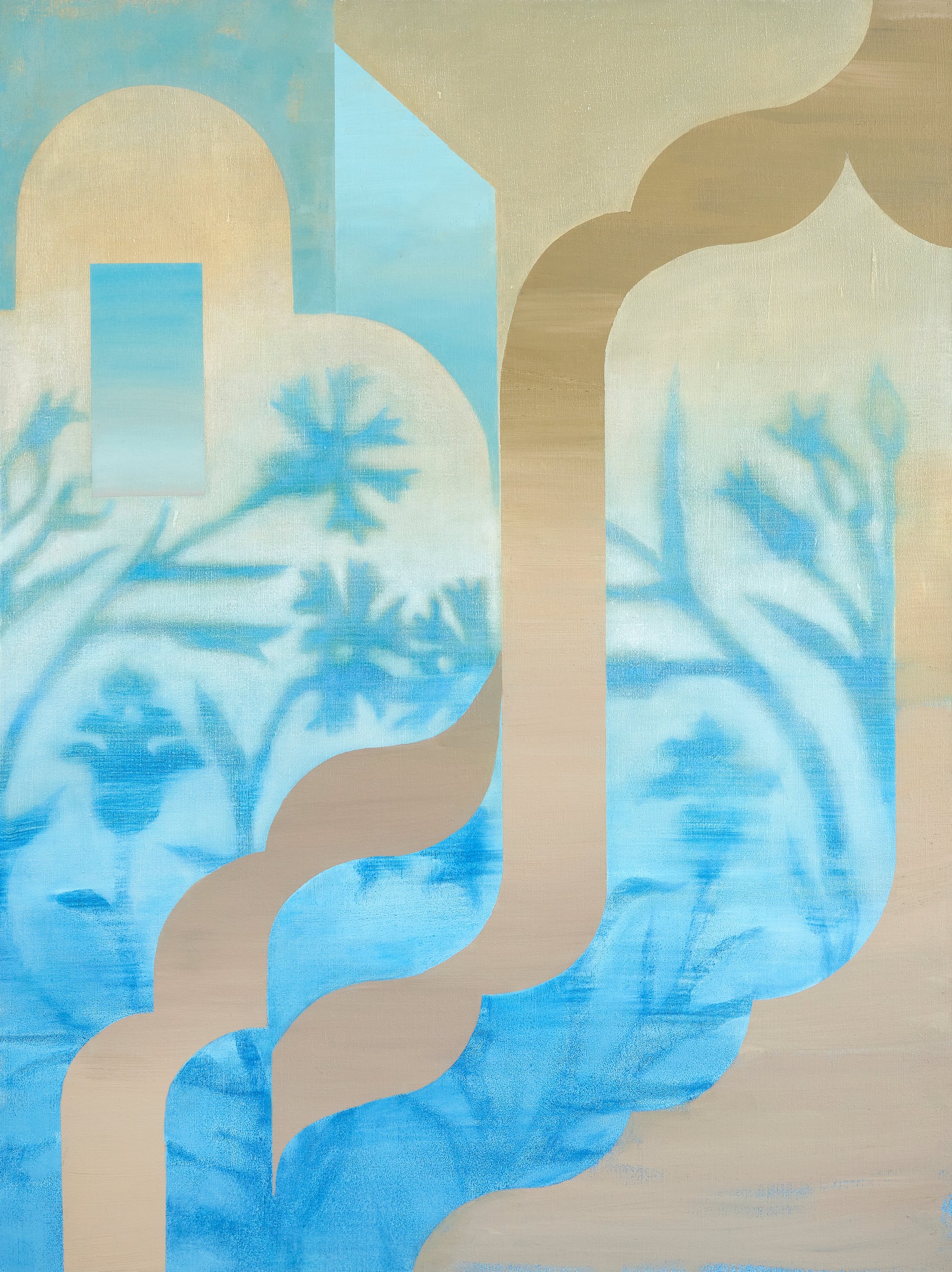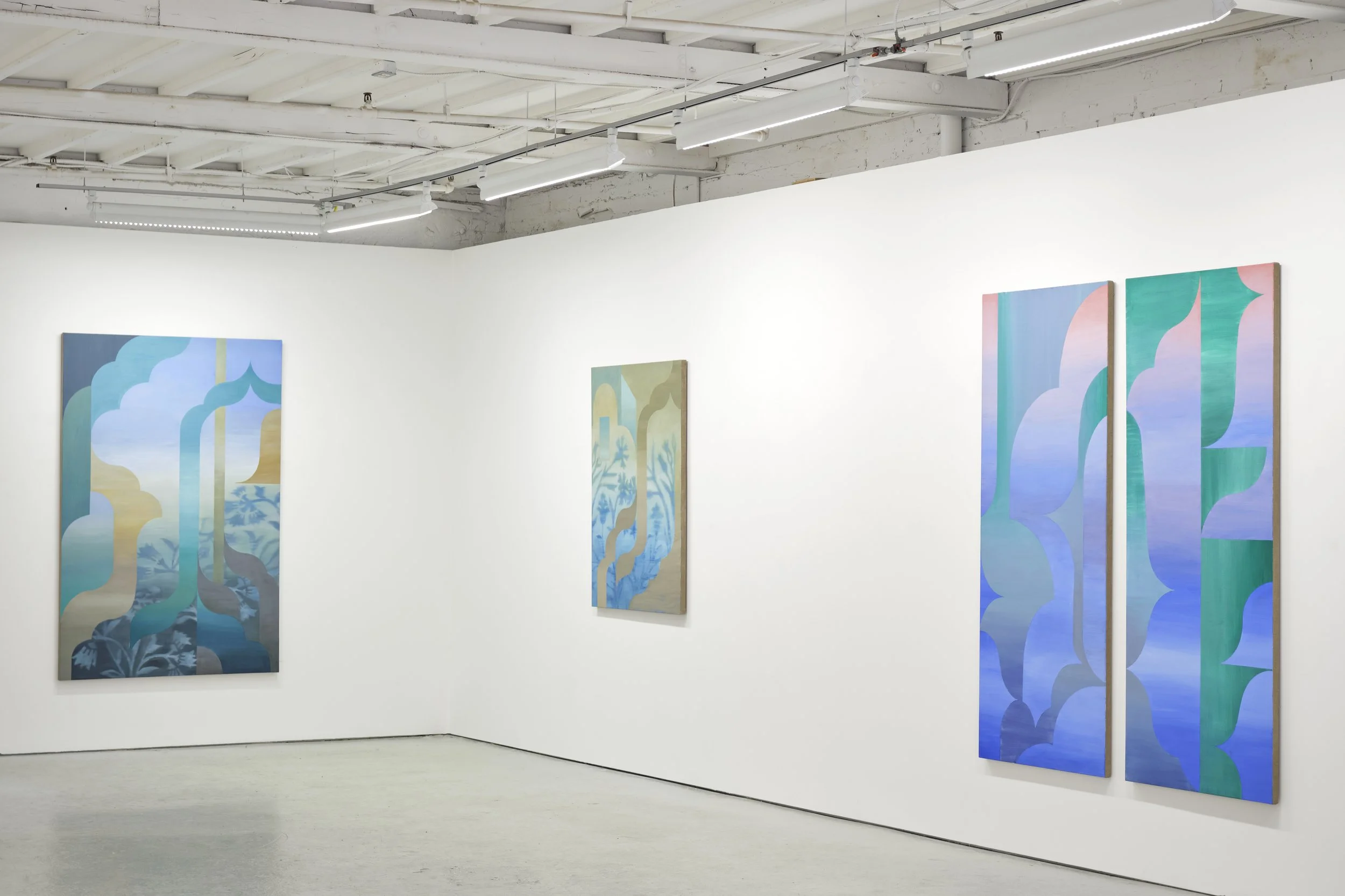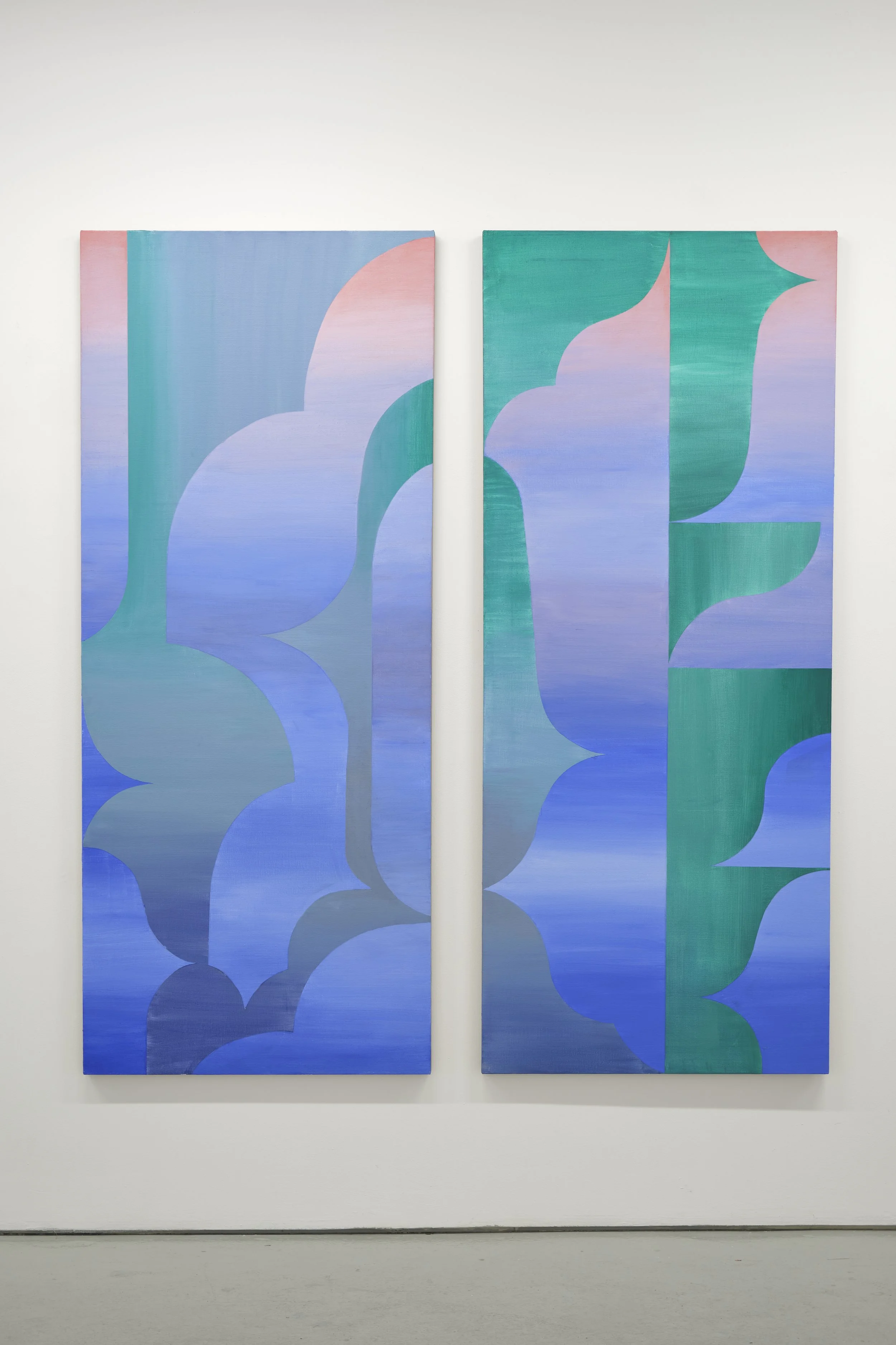
Semblance
May 1st to June 7th, 2025
United Contemporary, Toronto
Semblance continues Akhavan’s ongoing explorations of cultural hybridity, craftsmanship, and the reinterpretation of Islamic art. Informed by both Platonic thought and Iranian mysticism, for Akhavan, the notion of semblance within this work is not merely a matter of appearance, but a metaphysical inquiry—an echo of forms, a gesture toward vanished spaces and times.
In Plato’s philosophy, the World of Forms is a realm of perfect, eternal archetypes, of which the material world offers only fleeting shadows. The Iranian Illuminationist philosopher Shahab al-Din Suhrawardi also engaged deeply with this concept, weaving it together with both pre-Islamic and Islamic cosmologies. In his hikmat al-ishraq (حکمت الاشراق /Philosophy of Illumination), light and shadow are not just physical phenomena but carriers of knowledge—hierarchies of being. In this view, the visible world is imbued with veiled truths, and what we perceive is always in relation to what is hidden.
Finding root in these philosophies, Akhavan introduces floral motifs within her new paintings—drawn from memory, childhood gardens, and archival fragments—to create shadow-like forms that seem to hover between presence and absence. These are not illustrations of flowers, but silhouettes, ephemeral traces that recall the safety of home and the passing of time. Their lack of detail is deliberate: they function like memory itself—fading, partial, and shaped by longing. The shadows in Akhavan’s work also reference architecture, visualising the silent geometry of courtyards and walls that once held stories and prayers, now distant but not forgotten.
In the upper gallery, Akhavan extends her material explorations beyond the painted surface, translating her compositional forms into large sculptural works and giving dimensionality to the once-flat silhouettes. These sculptural pieces emerge as physical extensions of the painted language into the shared space of the viewer. Together with the floral motifs in the paintings, Akhavan creates an environment evocative of a courtyard garden, a threshold space both interior and exterior, contained yet porous, that speaks to both the metaphysical and physical realm. This suggestion of space is not a direct depiction but a semblance: a formal meditation on memory, embedded in Iranian visual tradition where ornament, repetition, and the fragment point not to decoration, but to cosmology.






















